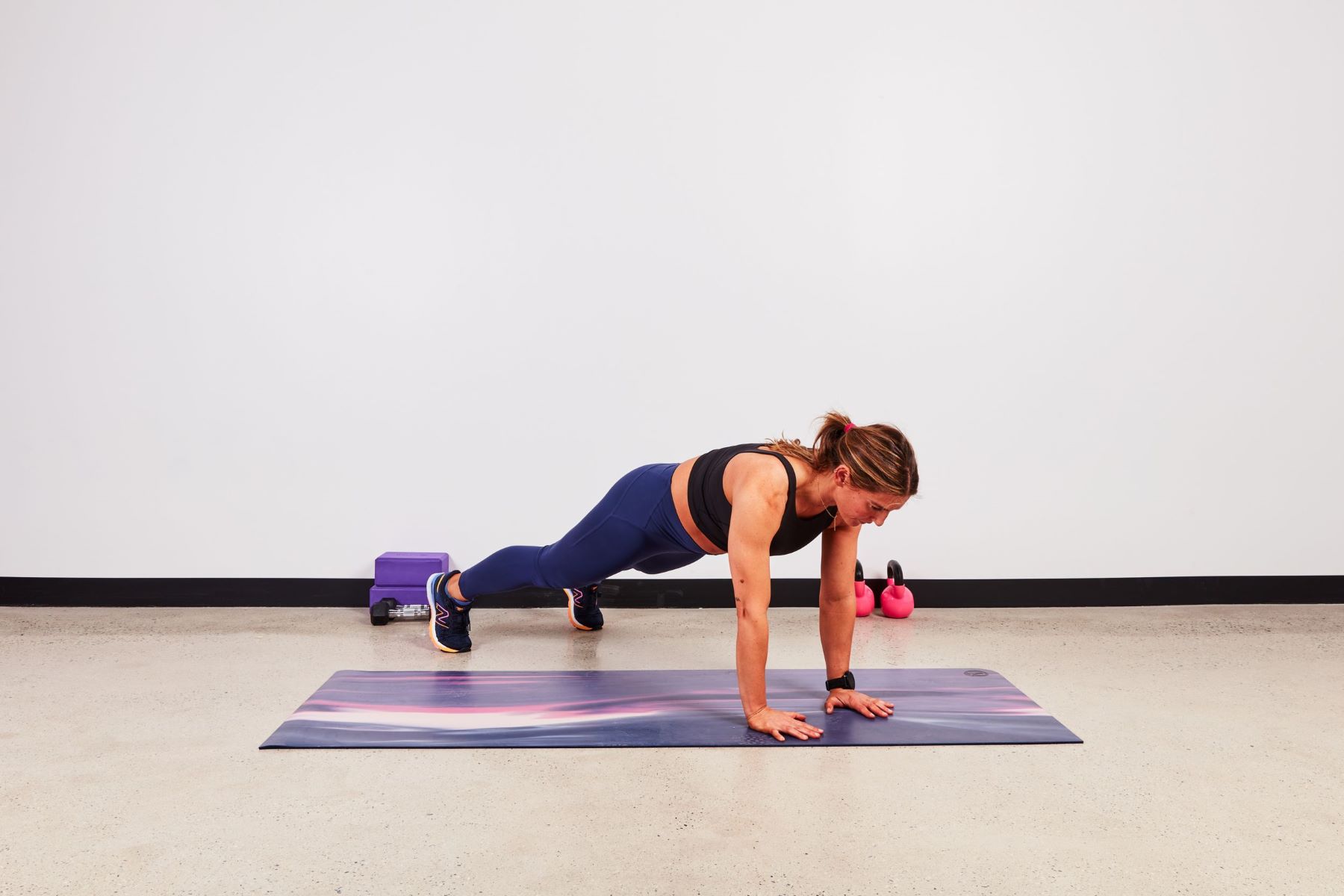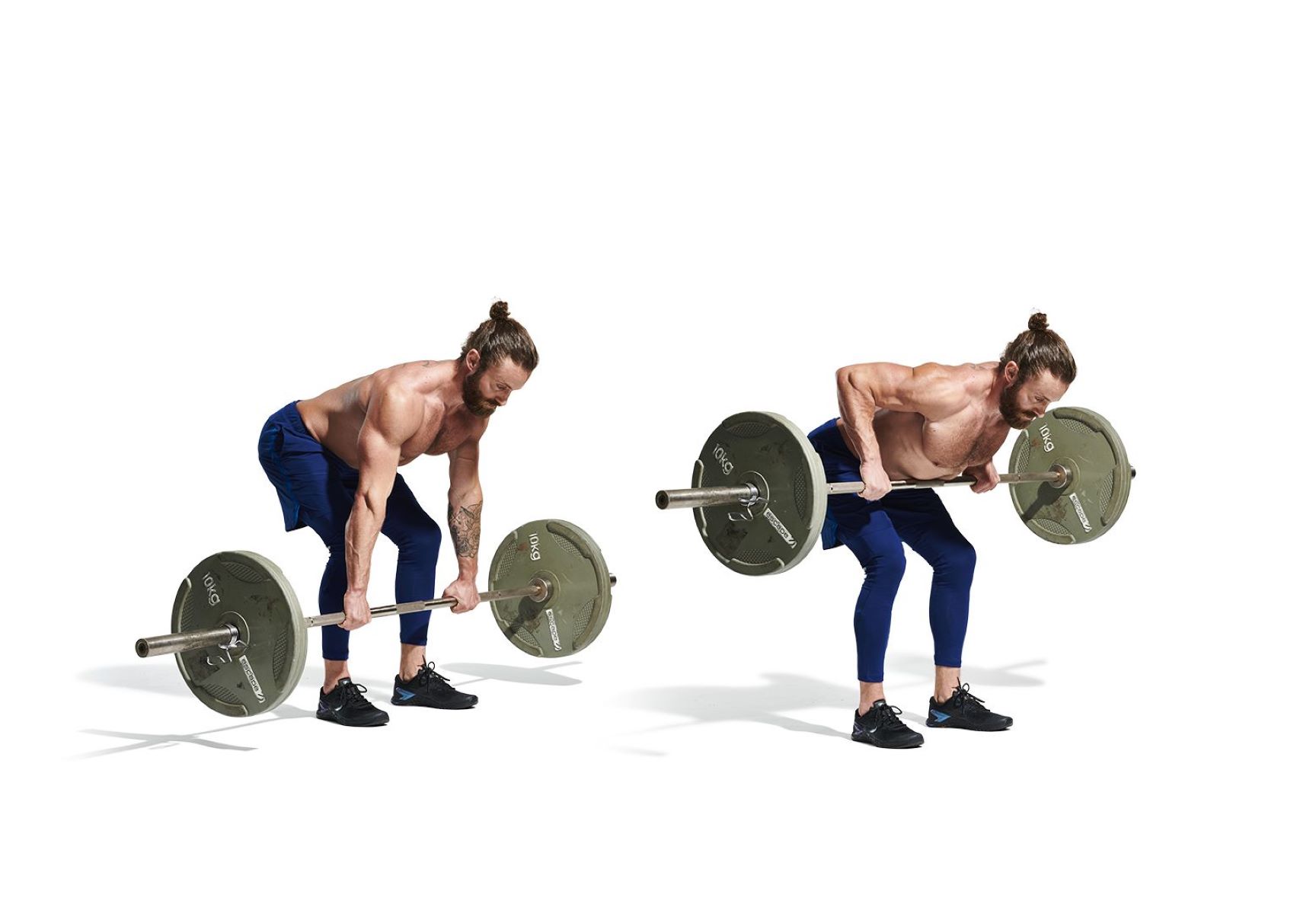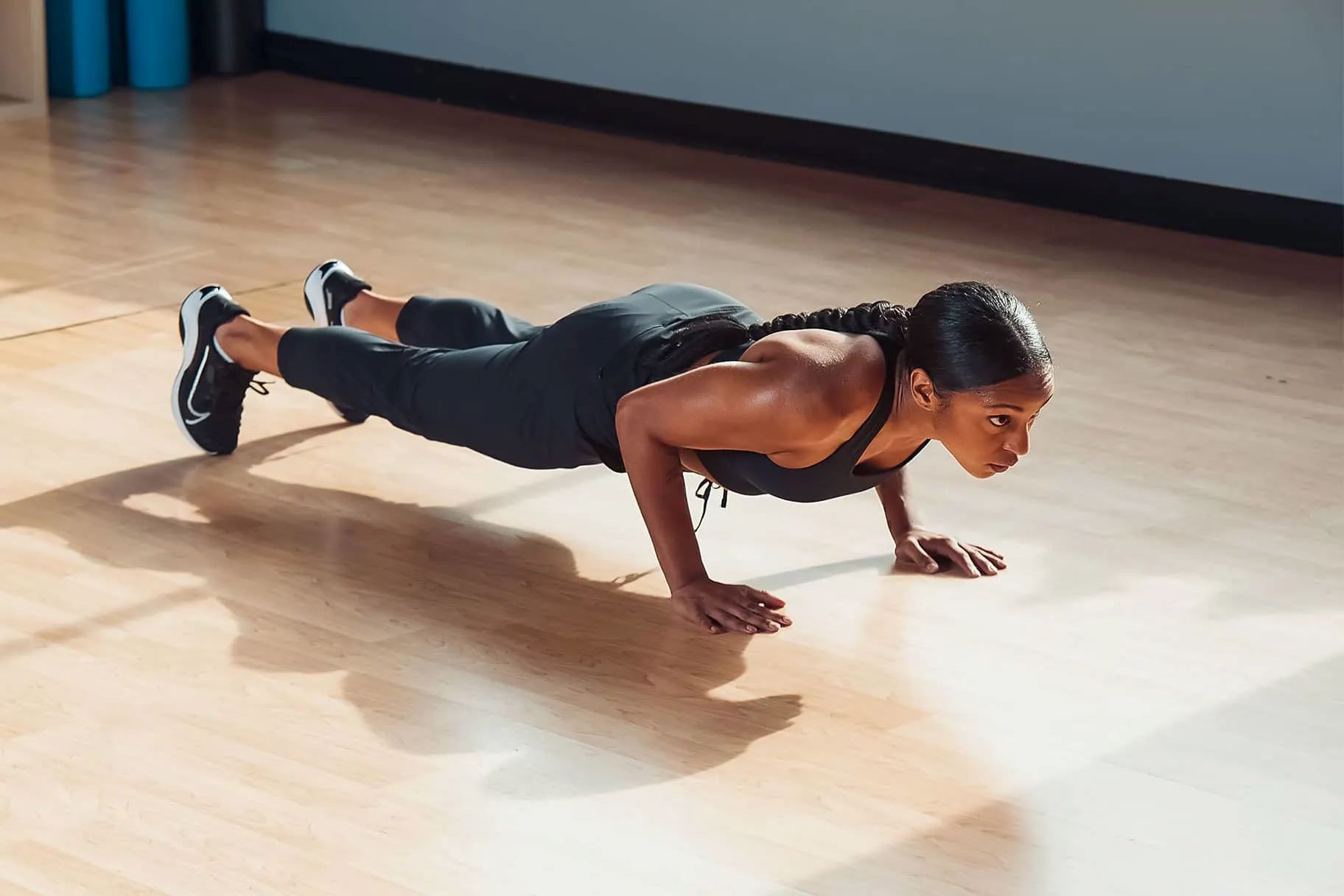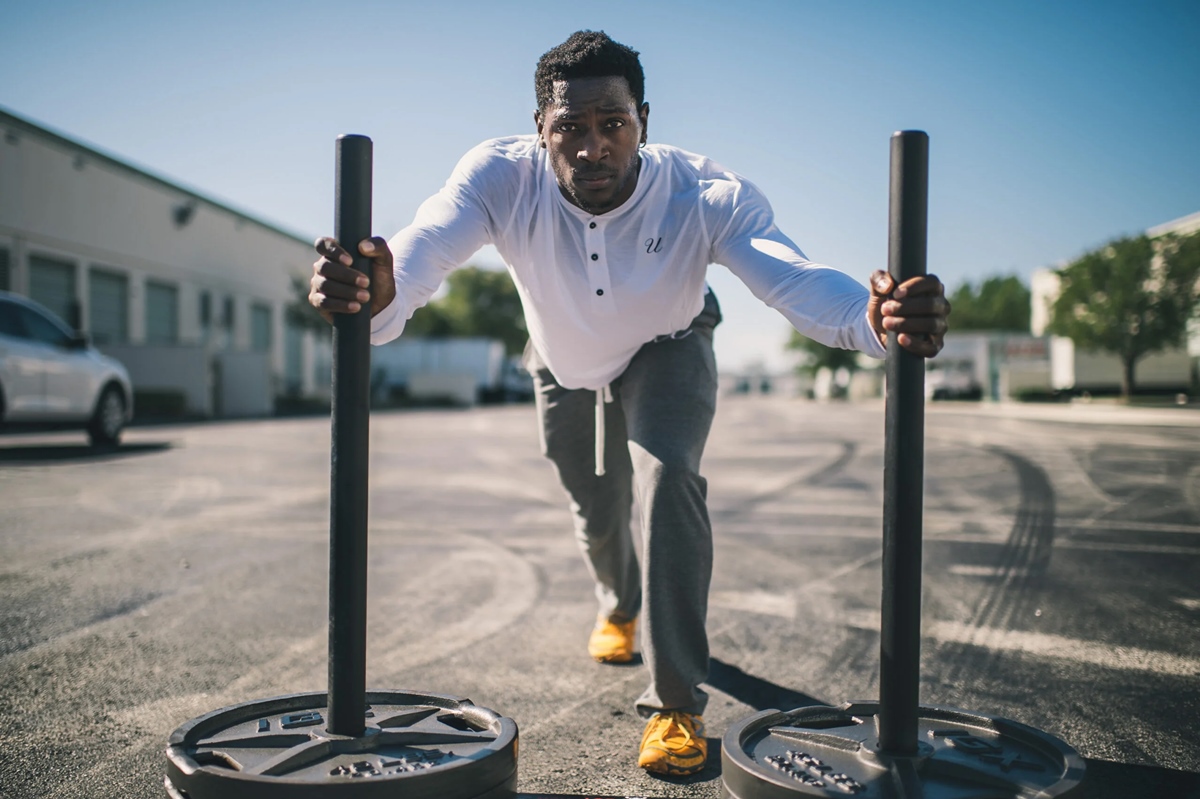

Featured
What Does Kettlebell Swings Workout
Modified: January 2, 2024
Get a full-body workout with featured kettlebell swings. Improve strength, burn calories, and build muscle. Discover the benefits of this dynamic exercise.
Introduction
Welcome to the world of kettlebell swings! If you’re looking for a versatile and effective workout that targets multiple muscle groups, then kettlebell swings should be on your radar. This explosive exercise has gained immense popularity in recent years, and for good reason. With its ability to improve strength, burn calories, and enhance overall fitness, kettlebell swings offer a unique and dynamic workout experience.
Kettlebell swings, originally developed in Russia, have now become a staple in many fitness routines around the world. This full-body exercise involves swinging a kettlebell from between your legs up to chest height using the power generated from your hips and legs. It’s a perfect blend of strength, cardio, and core training that offers a wide range of benefits.
In this article, we will explore the various benefits of kettlebell swings, the muscles worked during this exercise, proper technique, common mistakes to avoid, safety considerations, different variations, and how to incorporate kettlebell swings into your workout routine to maximize results.
Whether you’re a beginner or an experienced fitness enthusiast, kettlebell swings can be customized to challenge your fitness level and help you achieve your goals.
So, if you’re ready to swing into action and discover the world of kettlebell workouts, let’s dive in!
What are Kettlebell Swings?
Kettlebell swings are a compound exercise that involves swinging a kettlebell in a controlled motion, using the hips and legs as the primary force generators. Unlike traditional weightlifting exercises, which focus on isolated muscle groups, kettlebell swings target multiple muscle groups simultaneously, making them a highly efficient and effective workout option.
At first glance, kettlebell swings may seem simple, but they require proper technique and coordination to execute correctly. The basic movement starts with a hip hinge, where you bend at the hips while keeping your back straight. The kettlebell is then swung between the legs and propelled forward by forcefully extending the hips and contracting the glutes, hamstrings, and core muscles. The arms predominantly serve as a means to control the kettlebell’s trajectory, rather than actively lifting it.
Kettlebell swings can be done with various kettlebell weights, depending on your fitness level and goals. They can also be modified or combined with other exercises to create a diverse and challenging workout routine.
One of the unique aspects of kettlebell swings is their ability to engage the posterior chain, which includes the muscles in your back, glutes, and hamstrings. However, kettlebell swings are not limited to these muscles alone; they also activate the core muscles, shoulders, and quads, making them a comprehensive full-body exercise.
While kettlebell swings can certainly help build strength and muscle, they are equally effective at improving cardiovascular fitness due to their dynamic nature. The explosive hip thrusts and quick-paced swings elevate your heart rate, helping to burn calories and enhance endurance.
Moreover, kettlebell swings also improve your explosive power, balance, and stability, making them a valuable addition to any fitness routine or sport-specific training regimen.
Now that you have a good understanding of what kettlebell swings are, let’s explore the numerous benefits they offer!
The Benefits of Kettlebell Swings
Kettlebell swings offer a plethora of benefits that can improve both your physical fitness and overall well-being. Whether you’re a beginner or an experienced athlete, incorporating kettlebell swings into your workout routine can yield impressive results. Here are some of the key benefits:
- Improved cardiovascular fitness: Kettlebell swings are a high-intensity exercise that gets your heart pumping, helping to improve cardiovascular endurance and stamina.
- Increased calorie burn: Kettlebell swings are a calorie-torching exercise that can help you shed excess weight and body fat. The explosive movements engage multiple muscle groups, leading to an increased metabolic rate long after your workout.
- Enhanced muscle strength and power: Kettlebell swings primarily target the posterior chain, including the glutes, hamstrings, and lower back. These muscles are essential for functional movements like lifting, jumping, and explosiveness.
- Core stability and strength: Maintaining a stable and engaged core is crucial for executing proper kettlebell swings. The movement activates the abdominal muscles, obliques, and lower back, helping to improve core strength and stability.
- Better posture and body alignment: Kettlebell swings require a strong and straight back, promoting proper posture and alignment. Regular practice can help alleviate back pain and improve overall postural awareness.
- Improved grip and forearm strength: The swinging motion of the kettlebell forces you to maintain a firm grip, resulting in increased grip strength and forearm development.
- Efficient time investment: Kettlebell swings engage multiple muscle groups simultaneously, making them a time-efficient option for a full-body workout. Incorporating kettlebell swings into your routine can help you maximize your workout in minimal time.
- Versatility and variety: Kettlebell swings can be combined with other exercises or modified to create countless workout variations, keeping your fitness routine fresh and challenging.
These are just a few of the many benefits that kettlebell swings can offer. Whether your goal is to improve strength, build muscle, lose weight, or enhance athletic performance, kettlebell swings can be a valuable addition to your fitness toolbox.
Now that you understand the benefits of kettlebell swings, let’s delve into the specific muscles worked during this dynamic exercise.
Muscles Worked during Kettlebell Swings
Kettlebell swings engage multiple muscle groups, making them a highly effective full-body exercise. While the primary focus is on the posterior chain, there are several other muscles that come into play during the movement. Let’s take a closer look at the muscles worked during kettlebell swings:
- Glutes: The gluteus maximus, the largest muscle in the buttocks, is the primary muscle activated during kettlebell swings. The explosive hip thrust at the top of the swing engages and strengthens the glutes.
- Hamstrings: The muscles at the back of the thigh, including the biceps femoris, semitendinosus, and semimembranosus, are heavily involved in kettlebell swings. They work in conjunction with the glutes to extend the hips during the swing.
- Erector spinae: This group of muscles along the lower back plays a significant role in stabilizing the spine and maintaining proper posture throughout the swing. They provide support and prevent excessive strain on the back.
- Quadriceps: The quadriceps, located in the front of the thighs, help to extend the knees during the upward phase of the swing. They provide stability and contribute to the overall power generated during the movement.
- Core muscles: Kettlebell swings require a strong core to maintain stability and control. The rectus abdominis, transverse abdominis, and obliques all play a role in stabilizing the spine, protecting the lower back, and generating power during the swing.
- Deltoids and trapezius: The shoulders and upper back muscles are activated as you control the swing’s trajectory. They help to stabilize and control the movement of the kettlebell throughout the exercise.
- Forearms and grip muscles: Maintaining a solid grip on the kettlebell throughout the swing requires the engagement of the forearm muscles, including the flexors and extensors. Regular practice can lead to improved grip strength and forearm development.
The combination of these muscle groups working together during kettlebell swings creates a highly efficient and functional exercise that targets multiple areas of the body. By engaging both the upper and lower body, kettlebell swings offer a comprehensive full-body workout.
Now that you’re familiar with the muscles worked during kettlebell swings, let’s move on to the next section, where we’ll explore the proper technique for performing this exercise.
Proper Technique for Kettlebell Swings
Performing kettlebell swings with proper technique is essential to prevent injury and maximize the benefits of this exercise. Here’s a step-by-step guide on how to execute kettlebell swings with correct form:
- Begin with the proper stance: Stand with your feet shoulder-width apart, toes pointing slightly outward. Position the kettlebell on the ground in front of you.
- Engage your core: Before starting the swing, engage your core muscles by contracting your abs and bracing your midsection.
- Hinge at the hips: Initiate the swing by pushing your hips back and bending at the hips, maintaining a slight bend in your knees. Your torso should lean forward slightly, forming a straight line from your head to your tailbone.
- Grab the kettlebell: Reach down and grab the kettlebell handle with both hands, ensuring a firm grip.
- Prepare for the swing: Keep your arms relaxed, and slightly bend your elbows. Pull your shoulder blades down and back, maintaining a proud chest and neutral spine position.
- Drive with your hips: To initiate the swing, forcefully extend your hips by thrusting them forward while maintaining a tight core. Be careful not to squat or rely solely on your arms to lift the kettlebell.
- Generate momentum: As your hips drive forward, let the kettlebell swing back between your legs, maintaining a straight line from the kettlebell down to your spine.
- Explode with a hip hinge: As the kettlebell reaches its lowest point between your legs, reverse the motion by forcefully extending your hips, generating enough power to propel the kettlebell forward and up to chest height.
- Control the swing: At the top of the swing, your arms should be parallel to the ground, and the kettlebell should feel weightless for a moment. Engage your glutes and core to control the swing’s momentum and avoid hyperextending your lower back.
- Repeat the movement: Allow the kettlebell to swing back down between your legs, and smoothly transition into the next repetition without pausing at the bottom.
Throughout the movement, it’s crucial to maintain proper form and avoid common mistakes, such as rounding your back, using your arms excessively, or relying on momentum rather than muscle engagement.
Remember, the power for the kettlebell swing comes primarily from the hips and legs, so focus on generating force with your lower body while keeping your upper body relatively relaxed. This will ensure you’re getting the most out of the exercise while minimizing the risk of injury.
Now that you know the proper technique for kettlebell swings, let’s discuss some common mistakes to avoid.
Common Mistakes to Avoid
While kettlebell swings can be a highly effective exercise when done correctly, there are several common mistakes that people often make. Being aware of these mistakes will help you avoid them and ensure that you’re getting the most out of your kettlebell swing workouts. Here are some of the key mistakes to avoid:
- Using your back instead of your hips: One of the most common mistakes is relying too much on your back muscles to lift the kettlebell, rather than generating power from your hips. Remember to hinge at the hips and use your glutes and hamstrings to drive the swing.
- Rounding your back: Maintaining a neutral spine throughout the exercise is crucial to prevent lower back injuries. Avoid rounding your back or overextending it at the top of the swing. Keep your core engaged and your back straight throughout the movement.
- Not using enough hip thrust: The power behind a kettlebell swing comes from forcefully driving your hips forward. Failing to fully engage your hips can result in a less effective and inefficient swing.
- Using your arms too much: Your arms should serve as a conduit for the kettlebell’s movement, rather than actively lifting it. Avoid using your arms to lift the kettlebell or relying on them for momentum.
- Failing to maintain proper form throughout: Consistency is key in performing kettlebell swings. It’s important to maintain proper technique throughout each repetition, avoiding unnecessary movements or deviations from the correct form.
- Not using the right weight: Using a kettlebell that is too light or too heavy can affect your ability to perform the exercise correctly. Choose a weight that challenges you but still allows you to maintain proper form and control throughout the swing.
- Lack of control: Swinging the kettlebell too high or allowing it to swing out of control can lead to loss of balance and potential injury. Maintain control over the kettlebell at all times and focus on a smooth and controlled swing.
- Skipping the warm-up: Neglecting to warm up before performing kettlebell swings can increase the risk of injury. Take the time to properly warm up your muscles and prepare your body for the exercise, including dynamic stretches and mobility exercises.
Avoiding these common mistakes will help you perform kettlebell swings more effectively, reduce the risk of injury, and maximize the benefits of this dynamic exercise.
Now that you’re aware of the key mistakes to avoid, let’s move on to the next section, where we’ll discuss important safety considerations when performing kettlebell swings.
Safety Considerations when Performing Kettlebell Swings
While kettlebell swings can be a highly effective exercise, it’s important to prioritize safety to prevent injuries and ensure a safe workout experience. Here are some important safety considerations to keep in mind when performing kettlebell swings:
- Proper form and technique: Maintaining proper form throughout the exercise is crucial for safety. Ensure that you understand and execute the proper technique, focusing on engaging the correct muscles and avoiding common mistakes.
- Start with a lightweight: If you’re new to kettlebell swings or haven’t practiced them before, start with a lighter weight to allow your body to adapt to the movement and to build strength gradually.
- Pay attention to your surroundings: Make sure you have enough space around you to perform the kettlebell swings safely. Clear the area of any potential hazards, and be aware of your surroundings to avoid accidentally hitting objects or people.
- Choose the right kettlebell: Select a kettlebell that is appropriate for your fitness level and capabilities. Using a kettlebell that is too heavy can compromise your form and increase the risk of injury.
- Warm up before and cool down after: Prior to starting your kettlebell swing workout, it’s crucial to properly warm up your body with dynamic stretches and mobility exercises. After the workout, take the time to cool down and stretch to promote muscle recovery and reduce post-workout soreness.
- Listen to your body: Pay attention to any discomfort, pain, or unusual sensations during the exercise. If something doesn’t feel right, stop and reassess your form or take a break. It’s important to prioritize your safety and well-being.
- Progress gradually: As you become more comfortable and proficient with kettlebell swings, you can gradually increase the weight and intensity. Avoid jumping into heavier weights too quickly, as it can strain your muscles and joints.
- Consult with a professional: If you’re new to kettlebell swings or have any existing health conditions or concerns, it is advisable to consult with a fitness professional or personal trainer who can guide you through proper technique and form.
By taking these safety considerations into account, you can ensure a safe and effective kettlebell swing workout while minimizing the risk of injuries.
Now that you’re aware of the safety aspects, let’s move on to the next section, where we’ll explore different variations of kettlebell swings.
Variations of Kettlebell Swings
While the traditional two-handed kettlebell swing is the most common variation, there are several other ways to perform kettlebell swings that can add variety and challenge to your workout routine. Here are some popular variations of kettlebell swings:
- One-Arm Kettlebell Swing: Instead of gripping the kettlebell with both hands, perform the swing using only one arm. This variation requires greater stability and engages the core muscles more intensely.
- Alternating Kettlebell Swing: Start with the two-handed swing and, at the top of the swing, release and switch the kettlebell to the opposite hand. This variation challenges your coordination and grip strength.
- Single-Leg Kettlebell Swing: Perform the swing while balancing on one leg. This variation adds an element of balance and stability, engaging the muscles in your standing leg and challenging your core strength.
- Hand-to-Hand Kettlebell Swing: Instead of switching hands at the top of the swing, release and catch the kettlebell with the opposite hand at the bottom of the swing. This variation improves hand-eye coordination and grip strength.
- Bottoms-Up Kettlebell Swing: Hold the kettlebell upside down by the handle, with the bell facing upward. The challenge lies in maintaining a stable grip and control throughout the swing, working your forearm and grip strength even more.
- High Pull Kettlebell Swing: Similar to the traditional swing, but at the top of the swing, actively pull the kettlebell towards your upper chest, keeping your elbows high. This variation places more emphasis on the muscles of the upper back and shoulders.
- Sumo Kettlebell Swing: Position your feet wider than shoulder-width apart and perform the swing between your legs, similar to a sumo deadlift. This variation targets the inner thighs and glutes to a greater extent.
- Overhead Kettlebell Swing: Begin with the traditional swing, but instead of stopping at chest height, extend your arms overhead, fully straightening them at the top of the swing. This variation increases core activation and shoulder stability.
These are just a few examples of the many possible variations of kettlebell swings. These variations can help challenge different muscle groups, add variety to your workouts, and keep you motivated as you progress in your fitness journey.
Experimenting with different kettlebell swing variations can help you target specific areas, improve your overall strength, and break through plateaus in your fitness routine.
Now that you’re familiar with various kettlebell swing variations, let’s explore how to incorporate kettlebell swings into your overall workout routine.
How to Incorporate Kettlebell Swings into Your Workout Routine
Adding kettlebell swings to your workout routine can bring a multitude of benefits. Whether you’re looking to enhance strength, improve cardiovascular fitness, or achieve fat loss, here are some tips on how to incorporate kettlebell swings into your overall workout regimen:
- Warm up before starting: Prior to performing kettlebell swings, it’s important to warm up your muscles and prepare your body for the workout. Incorporate dynamic stretches, mobility exercises, and a few minutes of light cardio to get your blood flowing.
- Choose the right kettlebell weight: Select a kettlebell weight that challenges you but still allows you to maintain proper form and control throughout the swings. Start with a lighter weight if you’re a beginner and gradually increase the weight as you become more comfortable and stronger.
- Include a variety of swing variations: To keep your workouts interesting and target different muscle groups, incorporate different variations of kettlebell swings. Mix it up with one-arm swings, alternating swings, single-leg swings, and other variations mentioned earlier.
- Implement progressive overload: To continue challenging your muscles and promoting progress, gradually increase the intensity of your kettlebell swings. This can be done by increasing the weight, repetitions, or sets over time.
- Combine with other exercises: Kettlebell swings can be combined with other exercises to create a well-rounded workout. For example, you can include kettlebell swings in a circuit training routine or alternate them with strength exercises, bodyweight movements, or cardiovascular activities.
- Establish a suitable frequency: The frequency of your kettlebell swing workouts will depend on your overall training schedule and individual fitness level. Aim for 2-3 sessions per week initially and adjust according to your recovery and progress.
- Listen to your body: Pay attention to how your body responds to the kettlebell swing workouts. If you experience excessive soreness, fatigue, or pain, make adjustments to the frequency, intensity, or duration of your sessions.
- Track your progress: Keep a record of your kettlebell swing workouts to monitor your progress over time. You can track the weight used, number of repetitions, and any other relevant details. This will help you stay motivated and assess your improvement.
- Seek guidance if needed: If you’re new to kettlebell swings or unsure about proper technique, consider working with a qualified fitness professional who can provide guidance, correct your form, and tailor the exercises to your specific needs and goals.
Remember, consistency is key when incorporating kettlebell swings into your workout routine. Gradually increase the intensity and challenge yourself as you progress, but always prioritize safety and proper form to maximize the benefits and reduce the risk of injuries.
Now that you have the tools to incorporate kettlebell swings into your workouts, it’s time to start swinging and enjoy the benefits of this dynamic exercise!
Conclusion
Kettlebell swings offer a versatile and effective workout that targets multiple muscle groups, improves cardiovascular fitness, and enhances overall strength. By incorporating kettlebell swings into your workout routine, you can experience a range of benefits, including increased calorie burn, improved muscle strength and power, enhanced core stability, and better posture.
It’s important to remember the key elements of proper technique, such as initiating the swing from the hips, maintaining a neutral spine, and using the lower body to generate power. Avoiding common mistakes and prioritizing safety considerations will help you prevent injuries and maximize the effectiveness of your kettlebell swing workouts.
By exploring different variations of kettlebell swings and incorporating them into your overall fitness routine, you can add variety, challenge different muscle groups, and break through plateaus. Whether you choose to perform one-arm swings, alternating swings, or single-leg swings, the possibilities are endless.
Remember to warm up before starting your kettlebell swing workouts and gradually increase the weight and intensity to continue challenging your muscles. Listen to your body, track your progress, and seek guidance if needed to ensure that you’re performing the exercise correctly and safely.
So, embrace the power and versatility of kettlebell swings and start reaping the rewards they offer. Swing your way to improved strength, cardiovascular fitness, and overall well-being. Get ready to feel the burn and enjoy the satisfaction of a challenging and rewarding workout!









